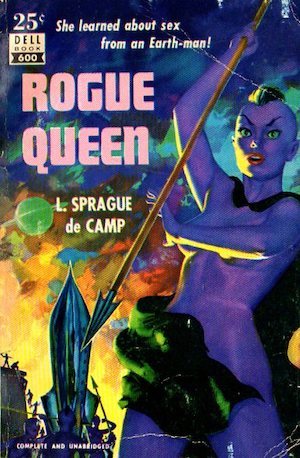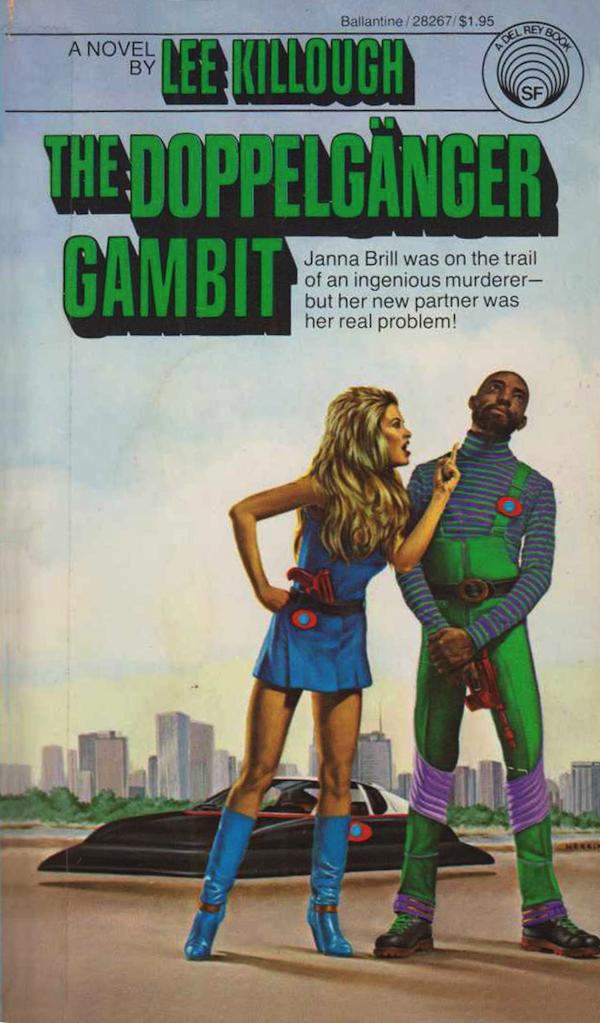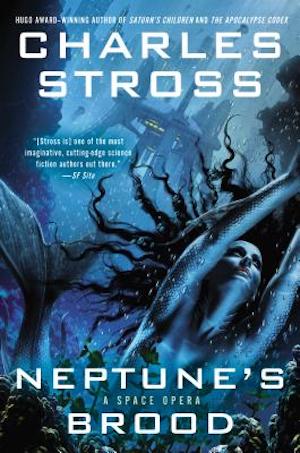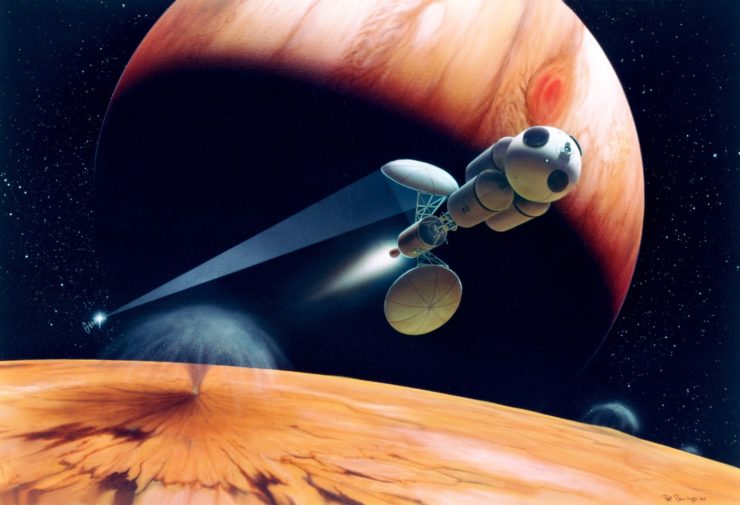Faced with the improbability of superluminal travel, many authors have decided to opt for sublight starships. True, sublight travel has significant challenges (slow travel, high energy demands) but at least it doesn’t necessarily break causality. Is it possible to tell interesting stories without faster-than-light travel? Yes indeed! Consider these five tales of sublight exploration and trade.
Rogue Queen by L. Sprague de Camp (1951)

The natives of the planet Niond (or as humans deem it, Ormazd) are superficially human, but in important ways they are more like ants and bees. Each community has a ruling queen who produces all the children. The workers and warriors are sterile females, while males are relegated to reproductive duties until such time as they are deemed surplus to needs and eliminated. But Ormazd as a whole isn’t unified. Different communities can find themselves at loggerheads, as do the worker-caste Avtiny and their aggressive Arsuuni neighbours.
Enter the human interstellar visitors.
Interplanetary Council rules forbid arming the Avtiny against the Arsuuni, not matter how adorable the researchers on board the NAFAL starship Paris find the Avtiny. Nevertheless, it doesn’t take the Paris scientists long to pick a side in the Avtiny-Arsuuni conflict. Not only that, they stumble across a biochemical secret that will upend Ormazdian society. They can save their pet Avtiny at a cost: complete transformation of their culture.
***
Rissa Kerguelen by F. M. Busby (1977)

The 21st century is a veritable utopia, governed by United Energy and Transport (UET). A utopia, that is, where peace and security are assured by rigid class stratification and a punitive justice system. Few of the cowed citizens can imagine a better way of life. Those who do can look forward to midnight visits from large, unfriendly UET minions.
While winning the lottery might be seen as a forgivable mistake, welfare orphan Rissa Kerguelen commits the unforgivable sin of wanting to keep her winnings. UET’s reach is long and there is no safe place on Earth for reprobates like Rissa. But Earth is not Rissa’s only option. Head out for the stars on a sublight starship and she might escape UET…if she is willing to take the long view.
***
The Doppelgänger Gambit by Lee Killough (1979)

Bussard ramjets are a godsend to 21st century America, offering discontented citizens escape from governments they find onerous while also shoring up governments by ridding them of citizens who might otherwise agitate for change.
To starship broker Jorge Hazlett, however, sublight colonization means providing clients with Boeing Starmaster 800s in lieu of the more expensive, more durable Starmaster 1000s the clients thought they were buying. The difference goes into Hazlett’s pocket; the clients are sent off to some distant world from which they can never return to complain.
This flawless business plan is threatened when the starship Invictus manages to send out a distress call just before its life support fails. Now the authorities will take a close look at Invictus’ sale papers. Unwilling to face the penalties for killing nine hundred people, Hazlett sets out to frame his business partner, Kellner. Problem: Kellner must die lest he protest his innocence too convincingly. Getting away with murder in a panopticon state should be impossible, but visionary Hazlett is convinced he has found a loophole. It’s up to cops Brill and Maxwell to prove him wrong.
***
Skye-Object 3270a by Linda Nagata (2010)

High above the planet Deception Well, orbital habitat Silk’s human inhabitants have all the essential tools for interstellar travel and trade. So did the ancient Chenzeme, who rather inconsiderately littered the interstellar region around Deception Well with autonomous weapons before going extinct. Interstellar travel in the human era is therefore extremely hazardous.
Protagonist Skye’s history is a matter of conjecture. She was only two years old when arrived in an interstellar life boat. The life boat sheds no light on her origins. Her rescuers have a plausible (if wrong) theory. That’s not enough for Skye. She is determined to find the truth. She digs deep into all the records she can find, legally or illegally. In so doing, she uncovers an as yet unrealized threat that jeopardizes every single person in Silk.
Good news! There may be a solution. Bad news: Obtaining it means venturing down to the surface of Deception Well, whose Guardians are arguably as dangerous to humans as Chenzeme weapons.
***
Neptune’s Brood by Charles Stross (2013)

By AD 7000, interstellar colonization is financed by investments that pay off over centuries. The beneficiaries: intelligent robots who have taken over for the human race, which has an unfortunate tendency toward self-extinction.
Pursued by an assassin, Krina Alizond-114 arrives at ocean world Shin-Tethys seeking treasure. Relict of an ancient colonization scam, the fabled Atlantis Carnet is an encrypted financial instrument of unparalleled value…but only if both of its encryption keys can be recovered, something treasure hunters have tried and failed to do for millennia. Krina is in possession of one key. Her sister Ana on Shin-Tethys has the other. Their fortunes are assured—provided that the sisters manage to avoid death at the hands (manipulating appendages?) of those threatened by their discoveries.
***
There are, of course, many other examples I could have used, thrilling tales in which persons—human and otherwise—set out with marvelous engines of light (Easter egg!) No doubt you have favourites whose absence on this list outrages you. The comments are below.
In the words of Wikipedia editor TexasAndroid, prolific book reviewer and perennial Darwin Award nominee James Davis Nicoll is of “questionable notability.” His work has appeared in Publishers Weekly and Romantic Times as well as on his own websites, James Nicoll Reviewsand the Aurora finalist Young People Read Old SFF (where he is assisted by editor Karen Lofstrom and web person Adrienne L. Travis). He is a four-time finalist for the Best Fan Writer Hugo Award and is surprisingly flammable.










